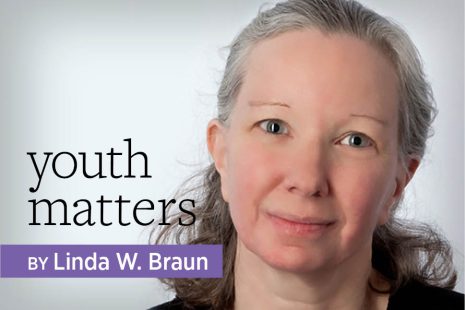
When advertising events in multiple languages or hosting programs that highlight different cultures, library workers may think they are doing all that’s necessary to engage with marginalized communities. But committing to equity requires more than checking off these types of boxes.
To achieve equity in youth services, we must build an authentic foundation that centers historically marginalized youth and families. This process is worth a closer look so that we can think more critically about the programs and services we offer.
Let’s consider an example: A library in a community with a large Vietnamese population distributes fliers in Vietnamese that list a variety of afterschool activities. That action may seem equity-based, yet we need to evaluate if putting out a flier in a different language is enough for an intended audience.
For instance, will the activities—though advertised in Vietnamese—be conducted entirely in English, without a translator present? Do they focus on themes that Vietnamese families are interested in? Will they take place at times when families are available? What if coming to the library is difficult because of transportation logistics or work schedules? Are we assuming a program that resonates with one population will work for others?
Remove yourself as the expert and share power with those in the community.
When we ask these types of questions, we begin to see that marketing services or collecting materials in one’s native language is only the beginning.
Consider another scenario: Youth services staffers know that there is a large Mexican population living in their area. These community members are not regular library users, and staffers would like to change that. Employees begin planning a mariachi event for Mexican families, until one staffer points out that they can’t assume a mariachi band will be of interest to this group.
Staffers then agree to learn about the lived experiences, assets, and challenges of the Mexican families in their community. They connect with local Mexican organizations and ask families questions like: How do your children like to spend their spare time? What do you wish were available to your children that currently isn’t? What programs and services would be beneficial to you?
After careful listening, library staffers realize the mariachi event is not something that will resonate with their target audience. They instead let their conversations dictate what, when, and where programs will be offered. Crucially, they remove themselves as the experts and share power with those in the community.
How should libraries go about designing processes that center equity authentically? They must:
Build relationships and trust. Having informal and formal conversations with caregivers and partner organizations allow staffers to understand the specific strengths, challenges, and interests of a community.
Create programs together. With relationships and trust in place, it’s possible to plan events and services alongside families. Staffers should give community members the chance to share ideas and make decisions.
Plan around schedules. Staffers should ask families when they are available and schedule programs at times that work best for many of them.
Select the best location. Staffers should hold programs where it’s easiest for people to participate. For instance, a library may decide to host a program at a community center that families can easily get to.
Authentic equity means abandoning a one-size-fits-all approach. It’s about going beyond the surface-level view that multilingual fliers or cultural events are our go-to solutions, and instead recognizing specific assets, needs, and experiences of historically marginalized youth and their families. If you ask the right questions and prioritize your community when planning programs and services, it’s possible to create a foundation of equity in everything you do.


